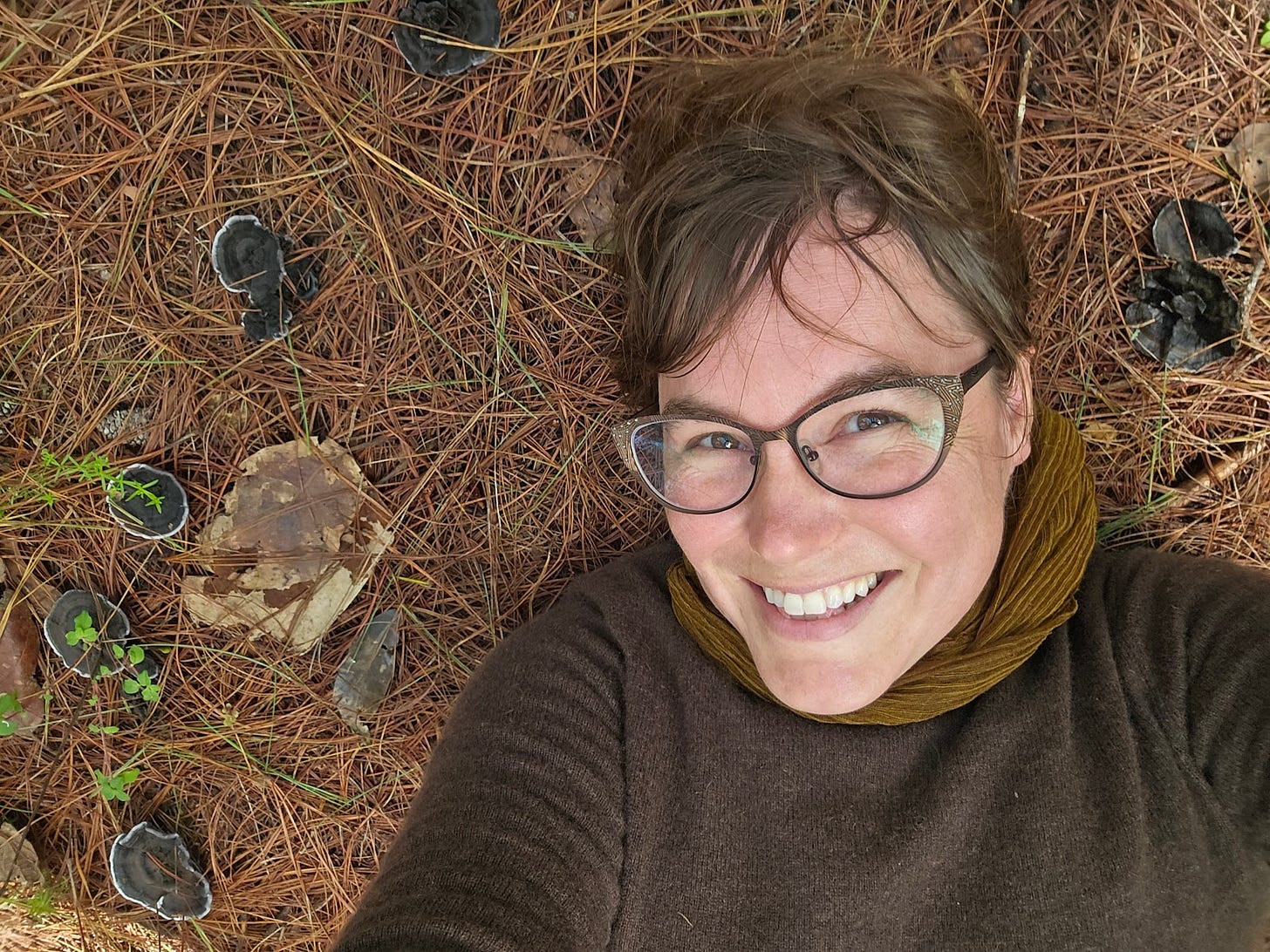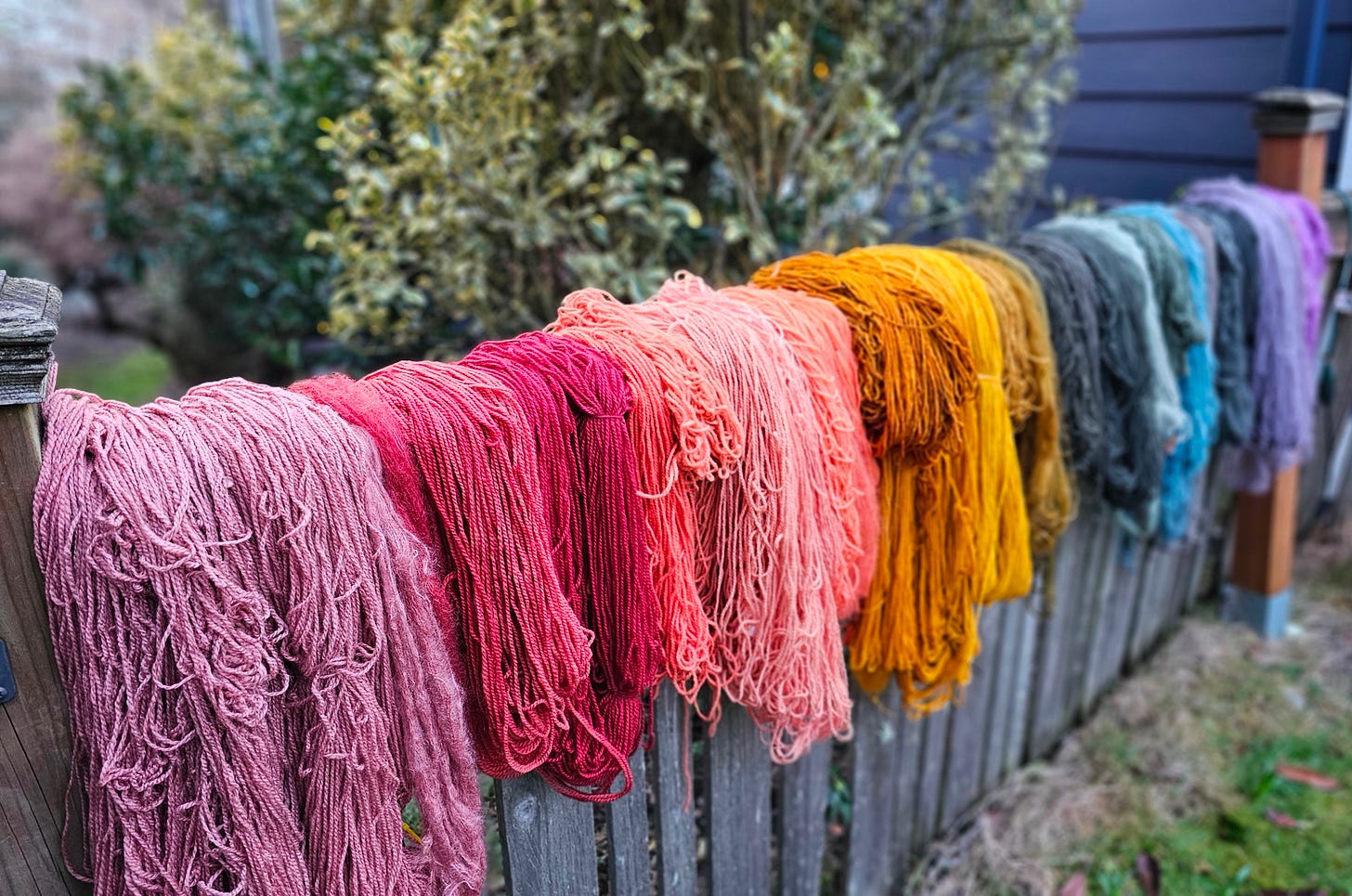Alissa Allen's Mycopigments Create a ‘Palette of Place’
A Pacific Northwest textile artist and naturalist uncovers nature’s hidden hues, creating stunning natural dyes from fungi and lichens foraged near her home.

“Anyone can plant a dye garden with plants from around the world, but to see what your place is naturally offering, there’s nothing quite like that.”
Dear Friends,
Foraging among the fungi at the foot of the Cascade Mountains, Alissa Allen can identify more than just the scientific names of her finds—she also sees the rich pigments hidden within. When they’re processed, a collection of mushrooms and lichens from a single outing will reveal a painter’s palette of wildly unexpected hues, which Allen will then use to hand-dye her yarns. These “mycopigments”—a term Allen coined—create dyes and inspire color combinations that are not only unique to the micro-region surrounding her home, but to the ecological moment.
We hope you’ll enjoy reading, “Alissa Allen’s Mycopigments Create a ‘Palette of Place,’” written by .
We always welcome your thoughts and suggestions, which you can offer in a comment, by tagging us in Substack Notes, or via email. Thank you for reading and sharing our stories, for supporting our work with a paid subscription if you can, and for being such a loyal part of the Craftsmanship community.
Sincerely,
Todd Oppenheimer
Publisher & Editor-in-Chief, Craftsmanship Magazine






